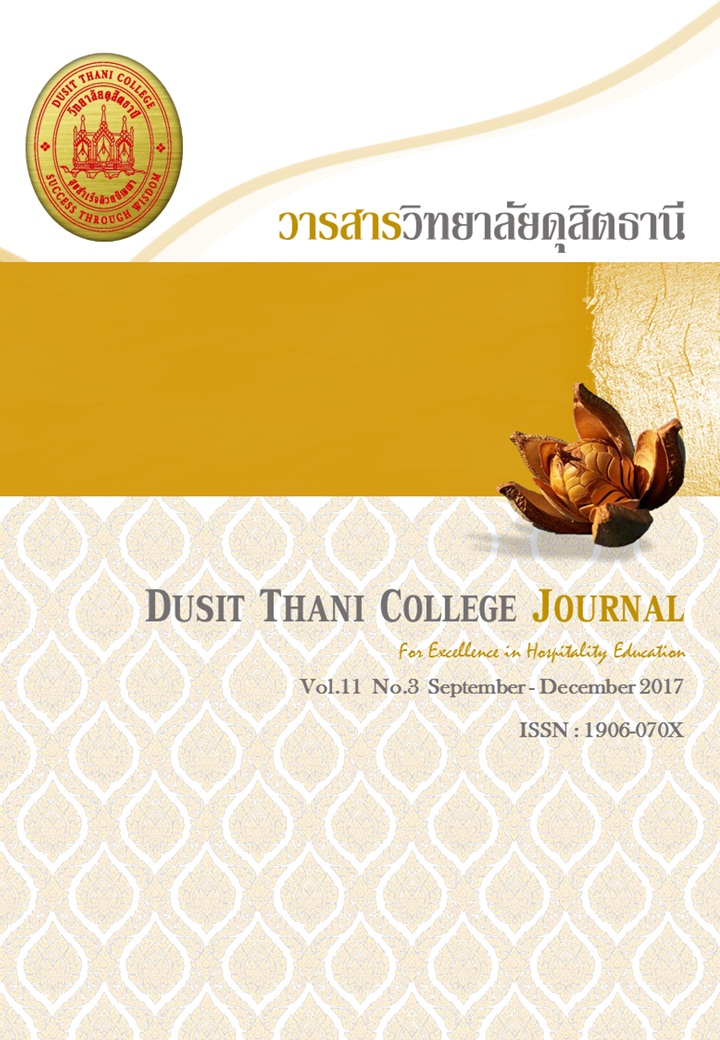Factors Influencing Tourist Decision-Making Towards Traveling to Luang Prabang
Main Article Content
Abstract
The objectives of these study were 1) to analyze behavior factors (Psychology factors and Cultural and Social Factors) influencing tourist decision-making towards traveling to Luang Prabang; and 2) to analyze marketing mix factors influencing tourist decision-making towards traveling to Luang Prabang.
Research Methodology: The sample consisted of 415 respondents. The sampling was quota sampling method to collect the sampling from 5 tourist attractions in Luang Prabang. The data was analyzed by frequency, percentage, mean, and standard deviation. The hypotheses were analyzed by and Multiple Regression Analysis.
Research findings:1) Cultural and social factor has influencing with the tourist decision making towards traveling to Luang Prabang, and 2) Marketing mix factors has influencing with the tourist decision making towards traveling to Luang Prabang.
Article Details
Article Screening Policy
- All research and academic articles to be published must be considered and screened by three peer reviews in the relevant field / article.
- All articles, texts, illustrations and tables published in the journal are the personal opinions of the authors. Editors don't always have to agree. And no responsibility whatsoever is the sole responsibility of the author.
- The articles to be published must never be published. Where did you first publish? And not in the consideration of other journals If the audit found that there has been a duplicate publication It is the sole responsibility of the author.
- Any article that the reader sees as being plagiarized or impersonated without reference. Or mislead the work of the author Please let the journal editor know it will be your greatest blessing.
References
Dellaert, B. G. C., &Häubl, G. (2012).Searching in choice mode: consumer decision processes in product search with recommendations.Journal of Marketing Research.
Durvasula, S., Lysonski, S., & Andrews, J. C. (1993).Cross-cultural generalizability of a scale for profiling consumers' decision-making styles.The Journal of Consumer Affairs.
Hawkins, D.L. &Mothersbaugh, D. L. (2013).Consumer Behavior: Building Marketing Strategy. 12thed. North America: McGraw-Hill.
Hoyer, W. D. &MacInnis, Deborah J. (2007).Consumer Behavior. 4th ed. Boston: Houghton Mifflin.
Hutchinson, J. W., & Alba, J. W. (1991).Ignoring irrelevant information: Situational determinants of consumer learning.Journal of Consumer Research.
Kanuk, L. G. &Shiffman, L. L. (2000).Consumer Behavior. 7thed. New Jersey: Prentice Hall.
Karunakaran, N. (2013) Shift to rubber cultivation and consequences on environment and food security in Kerala. Journal of Rural Development.
Kotler P., (1999).Marketing for hospitality and tourism. 2nded. Upper Saddle River: Prentice-Hall.
Kotler, P. (2000). Marketing Management. New Jersey: Prentice Hall.
Kotler, P. & Keller, K. L. (2009), Marketing Management, 12th ed., New Jersey: Prentice Hall.
Kotler, P. & Armstrong, G. (2010).Principles of Marketing. 13th(Global) ed. Boston: Pearson Education, Inc.
Loudon, D. V. and Bitta A. J. D. (2009).Consumer Behavior: Concepts and Applications.North America: McGraw-Hill.
Lutz, P. L. (1975). Osmotic and ionic composition of the polypteroidErpetoichthyscalabaris.Copeia, 1975.
Meenakshi, N. & Kumar, A. (2009). Organizational Behaviour. New Delhi: Vikas Publishing House.
Nowlis. (2010). The marketing of tourism products: Concepts issues and cases (5thed). London, International Thomson Business Press.
Peter, P. J. and Olson, J. C. (2008).Consumer Behavior and Marketing Strategy. 8thed. Singapore: McGraw-Hill.
Praipisut, J. (2014). Travel Behavior and Marketing Mix towards Thai Visitors Visiting Asiatique.Stamford International University.
Schiffman, L. G., &Kanuk, L. L. (2004).Consumer behavior.Upper Saddle River, NJ, Pearson Prentice Hall.
Solomon, M. G. (2009). Business Research Methods. 7th ed. New Jersey: Prentice-Hall.
Tourism Development Department [TDD]. (2014). Visitors by Province, 2011-2014 Retrieved from www.tourismlaos.org.
Wernerfelt. (1996).Learn. Retrieved from website:www.ersj.eu


